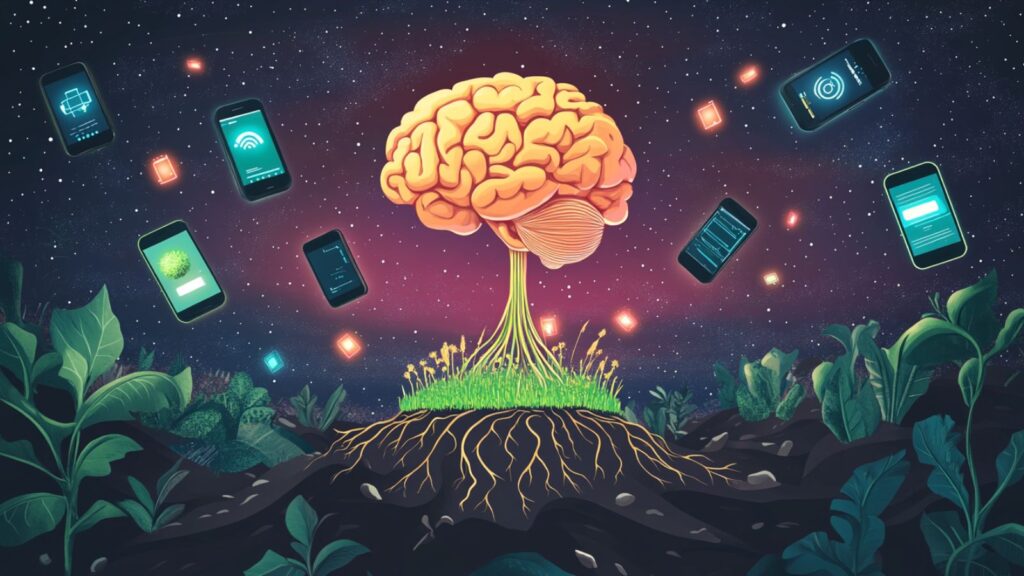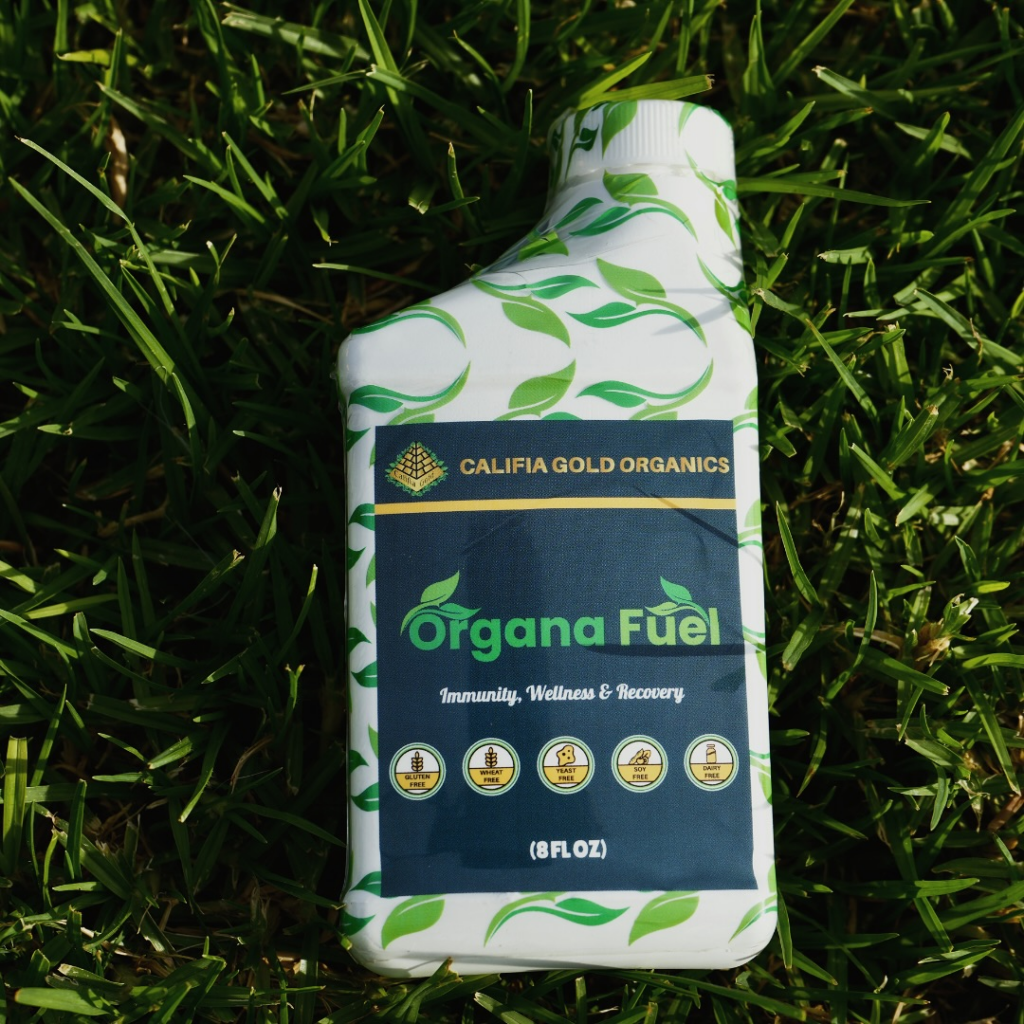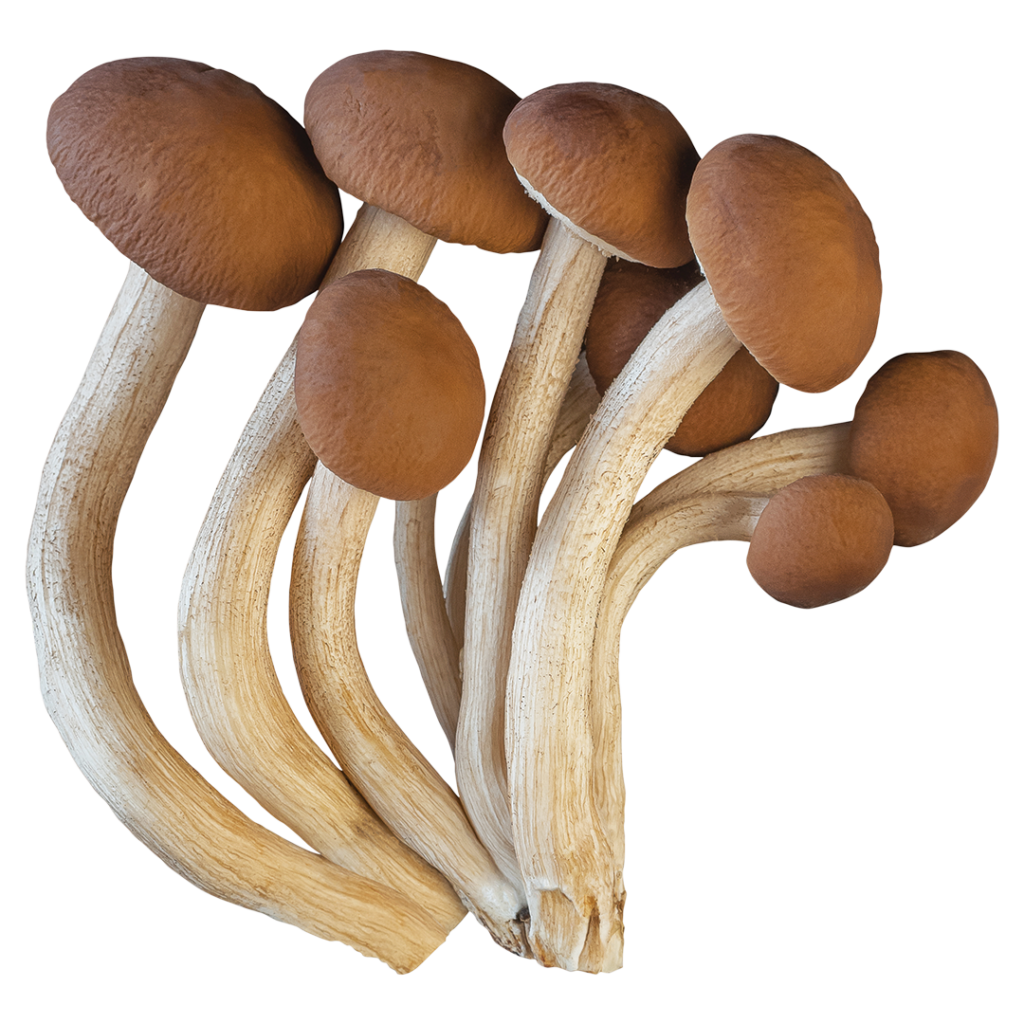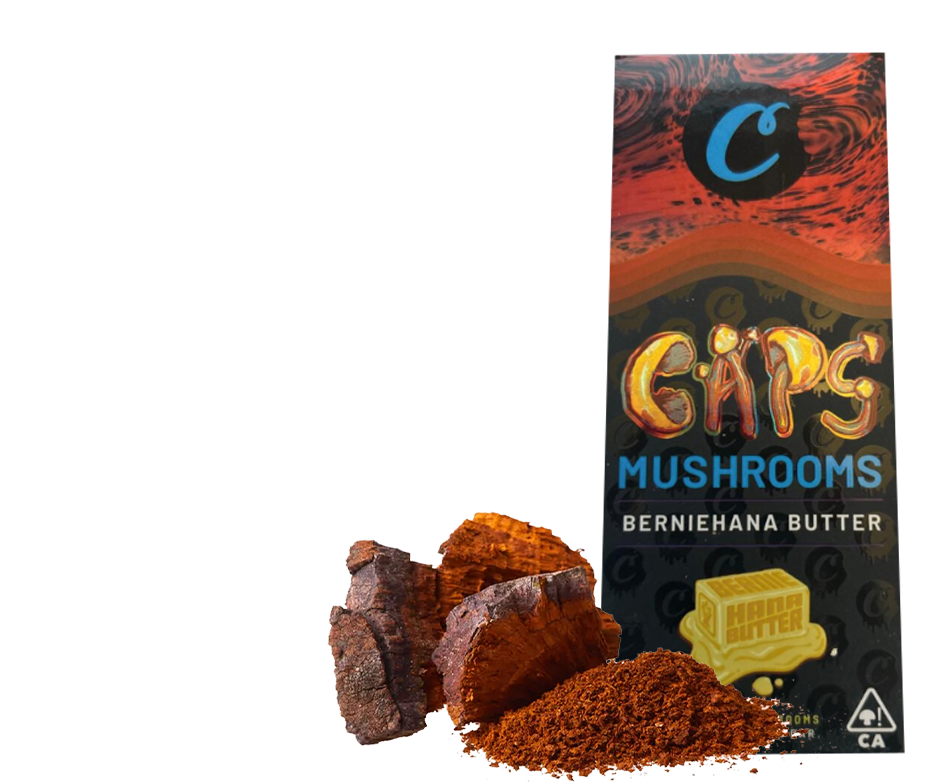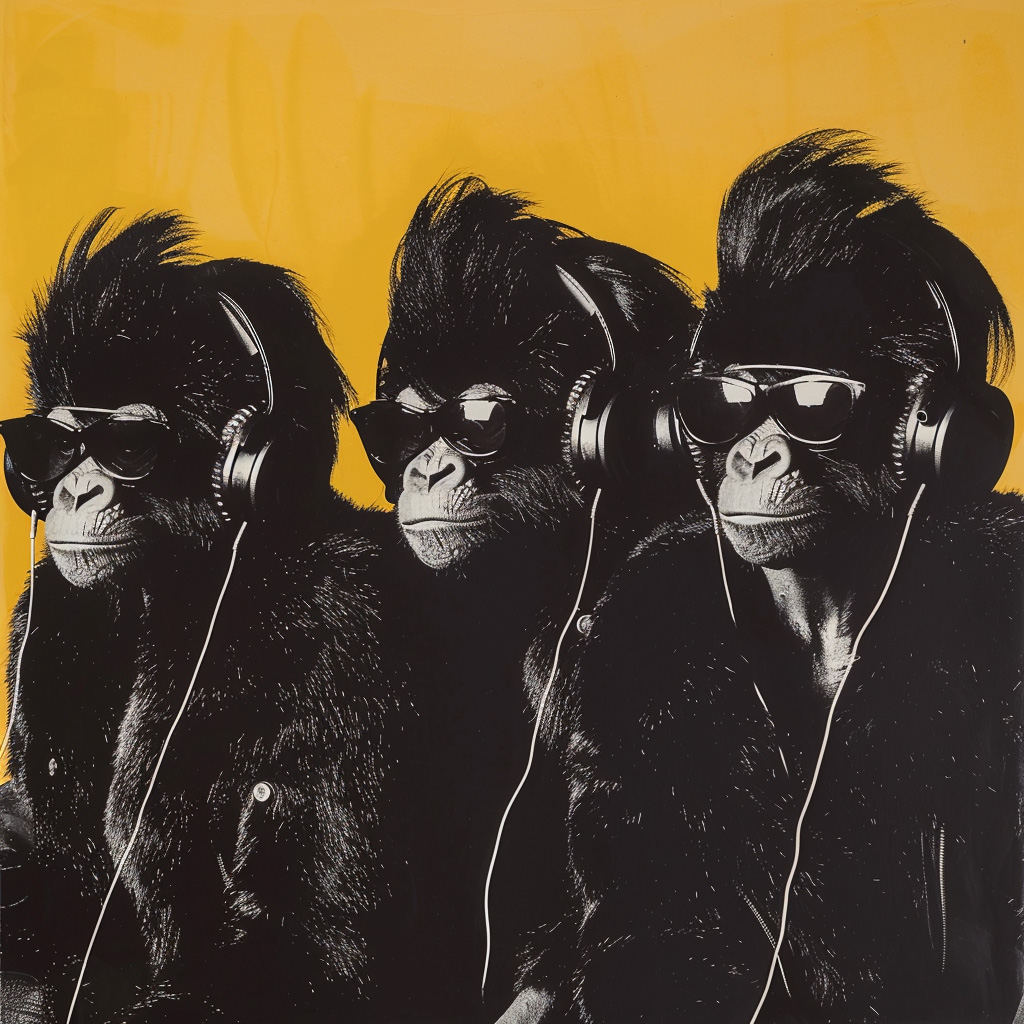Escape from New York
In the month between the two conventions I was holed up in Chicago preparing for New York. Word had begun to spread through the protest movement about preemptive FBI visits and arrests of activists prior to the DNC, and those of us in nationally visible positions were advised not to attempt to fly anywhere on the East Coast, since reports of activists ending up on the “no-fly” list began filing in. [1] A number of us decided to take the train from Chicago to New York.
Regardless of these scare tactics, virtually everyone I knew was headed to New York. The buzz was massive. The movement was coming alive in force and a million people were expected to descend upon Manhattan to protest Bush and his policies. The size and significance of these coming protests were being compared to those at the 1968 Democratic Convention in Chicago. That gave me an idea.
I realized that one way or another we were headed into a historical event, and I decided I was going to document it. I pulled together a film crew that included Jeff Conant and Greg Everett, both Senior Editors with Newtopia, and Ilko Davidov and Eric Burton from Chicago’s Bulletproof Films. Through Bulletproof, I had built a relationship with the filmmakers at Kartemquin Films, the group who produced the Oscar-winning documentary Hoop Dreams. They had been in the Chicago radical scene since the late Sixties and had an archive of film and a database of people who could speak to the events in Chicago in 1968.
The film, which we tentatively called Change, would focus on the two political conventions as symbols of these two years of profound social and political change. The bulk of the film would document the week long protests held in New York City, and juxtapose them with a historical account of the 1968 protests in Chicago.
The Green Party decided to bring a large presence to New York so we in the National Party began working with the New York Greens to plan a series of events, culminating in an all-day festival in Washington Square Park we were calling “A Green World Is Possible.” The massive United for Peace and Justice march was planned for the following day, to coincide with Bush’s scheduled address. The Green Party US was a member group of United for Peace and Justice, and as the duly elected peace representative for the Greens, I was expected to participate in the planning, which was byzantine, so say the least.
The Greens were also planning to participate in “A31,” a full day of decentralized civil disobedience and direct actions that were to take place on Tuesday, August 31st. Between preparations for the film, and organizing for the party, I was running myself ragged. I doubt I had ever been this excited about anything, though. Everything I had ever wanted to do (at the time), I was now doing.
Despite the excitement and anticipation in the air, the planning was not without its expected drama. United For Peace and Justice had applied for a permit for 250,000 people to march up Eighth Avenue past Madison Square Garden and on to Central Park where they would hold a rally. New York Mayor Michael Bloomberg refused to approve the permit for Central Park, citing the pathetically transparent rationale that the park had recently been “re-sodded” and the city did not want to “destroy the lawn.”
The City’s clever counter offer was to essentially exile the march to the West Side Highway, and for a while UFPJ complied, enraging most of the anti-war/ABB movement. UFPJ defended their compliance by explaining that their number one concern was to ensure “a safe and orderly march.” UFPJ wanted to protect the suburban Moms and Dads who might want to come show their displeasure at Bush’s policies, but were terrified of ‘radicals’ and the potential for “violence.” UFPJ did not want to incite further enmity with city government or the NYPD.
The ANSWER coalition demanded defiance, and proclaimed that they were going to march on the park whether anyone liked it or not. The net effect was that the movement was once again consumed in bitter internecine squabbling in the run up to the convention, and it entered New York with the divide between the two factions thoroughly cemented. UFPJ denounced ANSWER for inciting confrontation, and ANSWER denounced UFPJ as being tools of the Democratic party. The whole thing was pathetic. They were doing precisely what the authorities prayed they would do, effectively neutralize each other.
Adding fuel to an already incendiary admixture, it wasn’t until I arrived in New York that I truly began to understand the depth of animosity that existed between the Nader camp and the Cobb camp. Nearly all the New York Greens supported Nader, and loathed Cobb. Moreover, Greens operate under decentralized localism as a de facto condition, so any attempts at centralized control are usually met with resistance. Hence, they resented the national party (which meant me) coming in and essentially crashing their party.
The main difference between the two major party conventions in Boston and New York was the level of preparation on both sides. In Boston, there was a massive interagency security presence that was complete overkill, and hardly anyone showed up to protest. In New York, the security presence dwarfed even that of Boston, yet the sheer number of protest groups, events, and actions that were scheduled was astounding. What may have been even more astounding was that the New York City Police department considered every last one of us protestors a “security threat,” which we discovered in the weeks leading up to the convention.
Consolidating intelligence from multiple federal, state and local agencies, the NYPD circulated a “confidential security report” on June 24, 2004 in preparation for the convention. It outlined the multi-layered security procedures that would be implemented during the convention, including multiple road, bridge, and tunnel closings and high security barricades surrounding Madison Square Garden, extensive mobile riot control in wagons and on scooters, street saturation with patrol officers enforcing the notorious “quality of life” statutes which gave police entree to arrest and detain anyone anywhere for virtually any petty offense–public drinking or urination, smoking pot, being homeless, “disorderly conduct”–and of course, unprecedented levels of surveillance that included thousands of security cameras peppering Manhattan Island, mobile command trucks, officers on foot with hand held video cameras, and the coup de grace, a surveillance blimp with high power zoom cameras that would hover over the protestors all week.
The NYPD is massive. It has 40,000 active duty officers, and for the convention they hurried through training an additional 1000 recruits to have them on the street in time. They are as notorious for police brutality and misconduct as the Chicago and Los Angeles police departments, but they exist on an exponentially greater scale. Since 9/11, billions in enhanced security funding flowed from Washington to New York City, turning the NYPD into one of the most heavily armed and equipped paramilitary groups on the planet. The Republican Party’s choice of New York City for their convention was as deliberate as it was galling. Designated another National Special Security Event, BushCo aimed to use the $76 million dollar police state backdrop as the setting for terrifying the nation into reelecting him.
The NYPD was already embroiled in legal action following their conduct at the February 13th, 2003, United for Peace and Justice pre-invasion march that drew 300,000. In this march police used street cordons to erect impromptu “protest pens” in which they would encase segments of the march, cutting them off from the rest and then not permitting anyone to leave. There were reports of beatings, pepper sprayings, horse trampling, and preventive arrests, but it was after the arrests that things got creepy.
After demonstrators were arrested, NYPD booking officers used a document called the “Criminal Intelligence Section Demonstration Debriefing Form” as a supplement to their interrogation procedures. The form asked questions about the detainee’s political affiliation, views on the Middle East, and even their whereabouts on September 11, 2001. Some sample questions included: "Do you hate George W. Bush," and "Don't you think it was necessary for us to get involved in World War II?" Some detainees were asked about their religious affiliations. Those who requested lawyers were threatened, and the questioning continued. The form was revealed to the public in April of 2003 and the NYPD agreed to halt the practice. [2]
There was a law on the books mandating that police must have proof of an actual or imminent crime before investigating a suspect’s political activities. These were called the “Handschu guidelines.” In January of 2003 they were modified by the U.S. District Court of New York, and under those changes the NYPD no longer needed to obtain specific information of criminal activity before investigating a political group. This led to a deliberate and premeditated plan to screen and classify groups based upon their political affiliation, and to mass arrest and detain protestors, as revealed in NYPD documents released in 2007 under court order. [3]
Although the New York City Council passed a resolution condemning the act, it was non-binding, and the National Special Security Event designation trumped all other laws. This paved the way for the Republican National Convention protests to become the largest domestic intelligence gathering operation on the protest movement since the Vietnam War.
In perhaps the single most disturbing revelation in the run up to the convention, the NYPD had compiled a dossier on each protest group, their particular event or action, and the recommended course of action for law enforcement. I was not surprised to find the Green Party and all the groups we worked with listed in this dossier of “subversive organizations,” even though many of the names of the groups listed in the dossier were redacted when the NYPD finally declassified the report. We never got to know what they really thought of us, but we knew enough to know that they considered us the enemy.
The police strategy was to disrupt, discourage, and ultimately, disperse the protest presence from the streets by creating a climate of fear. Under the broadly defined rubric of “domestic terrorism” found in the Patriot Act and Homeland Security Act, and using an “elevated terror alert,” virtually anyone could be construed as a lawbreaker. As a result of this zealotry, the arrests did not discriminate: media, legal observers, and innocent bystanders alike were all caught up in the sweeps.
In preparation for these mass arrests, the Republican National Committee leased Pier 57, a filthy and hazardous decommissioned bus depot on the West Side Highway, from the Hudson River Trust and the Port Authority of New York. With the assistance of the NYPD and reportedly Halliburton, Pier 57 was turned into a makeshift prison camp that came to be known as “Little Guantanamo” and "Guantanamo on the Hudson." [4]
The mass-arrests began Friday night, August 27, during the Critical Mass ride. 5,000 bicyclists had been peaceably riding around the city for hours before police started cordoning off the route. The ride ended abruptly without incident or provocation at 10th Street and Second Avenue, when police formed a line with motorcycles and slowly pushed into the crowd of bicyclists, knocking many of them over while fellow officers pounced, cuffed, and made arrests. The scene repeated itself with another group of riders uptown at 37th St. and Seventh Avenue.
In both instances police on mopeds sealed the block by preventing anyone from leaving, and riders were then encircled with orange plastic netting. Cameras rolled as riders were thrown off their bicycles, heads driven into the asphalt, then restrained with plastic flex-cuffs before being dragged away to awaiting buses and paddy wagons. Nearly 300 people ended up on Pier 57 that night, and remained in detention for the rest of the weekend.
The next day, Saturday, we Greens gathered in Washington Square Park for “A Green World Is Possible.” The day was defined by the war between the Naderites and the Cobbites, who booed and shouted each other down at every opportunity. David Cobb was openly mocked by the New York Greens, and it was soon clear that the whole idea of “Green unity” and the entreatments made by Peter Camejo in his Avocado Declaration had been chucked out the window in favor of factionalism. Tempers were flaring, and in spite of a diverse collection of speakers and artwork and appearances by all the heavy hitters in the party, I considered the event a wash, and left the park in a state of disgust.
As dawn broke on Sunday I rolled out with the film crew to the staging area for the big UFPJ march. For the next four hours we watched as hundreds of thousands of people began to arrive and line up behind us, stretching for miles down Eighth Avenue. Before the march UFPJ held a small press conference and in which celebrities like Michael Moore, Rosie Perez, and Danny Glover spoke to the crowd. By the time the march began, the sidewalks were overloaded, and the marchers stretched out of sight.
By some stretch of luck, with a little bit of angling and being in the right place at the right time, I was asked to be on the “lead contingent” which would hold the giant UFPJ banner at the front of the march. As people began to move into place I realized I was standing between people like Moore, Perez, Glover, Jesse Jackson, New York Congressman Charlie Rangel, and some of the more visible figures within the movement like Medea Benjamin, Leslie Cagan, and Van Jones. As I grabbed hold of my little piece of the banner, a quiet Steve Earle moved in next to me and introduced himself. I had to laugh. Me, the guy who could not stand the celebrity antiwar movement because it was so narcissistic, was now surrounded by it. Thank god no one was bearing a cross this time.
Because of this large celebrity entourage, the media was arrayed in a giant semi-circle, five deep. I had never seen so much media coverage in all my life. It was truly as if the whole world was watching.
In the final hours before the march UFPJ leadership negotiated a compromise settlement with the city in which they would be permitted to march uptown past Madison Square Garden, and then double back downtown to Union Square, thus avoiding exile to the West Side Highway. The caveat was that once we got to Union Square at the conclusion of the march we had to immediately disperse, which was no better. There was one loophole, however. Central Park was not “closed” to the public and there was nothing preventing people from heading there after the march, so long as no organized rally took place, and no official announcement was made. Through whispers like the wind, word of the plan to converge on the park after the march spread, even though it meant heading back uptown another 50 blocks.
I will say this: even though I was still convinced that marches were ineffective, there was something altogether special about a march that size. It was probably one of the five most exciting events of my life. In the end, half a million people were arrayed behind me, and the feeling of all that collective energy, that pent up aggression, fear, hope, longing and desperation pushed us on like a tsunami. We looked around at each other in awe. This was perhaps the largest single political march in US history.
There was a moment as we passed the Garden–facing deep lines of riot police, National Guard, and the seething eyes of Republican delegates–that we understood that for this day, we were the voice of America, and the voice of the world. The power of half a million citizens directing their rancor at a single locus of attention is a life-altering experience. We the People are Pissed! And I’d be lying to you if I didn’t believe, if only for a moment, that we just might win too.
The only recorded “incident” during the march involved a group of anarchists who built a paper dragon and set it on fire as it was passing Madison Square Garden. Like in Boston, the kids were pounced on and hauled away. For a short while the march was cut in two, but the back half surged forward and raced to catch up with the front. By the time the march turned around and headed back south, it began to pick up speed, and marchers arrived in Union Square striding and jogging along.
While most of the marchers were shooed out of the square by UFPJ volunteers, those of us in the lead contingent mounted the pagoda and gathered around a group of young men in khaki fatigues and floppy hats from Iraq Veterans Against the War, a newly formed group that was using the RNC as their ostensible coming out party. With trepidation they climbed the stairs and stood before the media gathered below them. Jesse Jackson moved quickly to the center of the group of vets and started speaking to the media. The discomfort on the faces of the vets was visible. After the impromptu press conference, the vets quickly and quietly disappeared.
It took a few hours for the entire half million people to complete the march route and disperse back into the city. A good portion headed straight for Central Park, and for the rest of the day a hundred thousand people romped in the sun while musicians and marching bands played, mimes and clowns performed political theater, Libertarians and Greens argued and flirted with one another, and Americans of all stripes generally enjoyed each other’s company. It was so much better than having to endure another preachy UFPJ rally. People gathered on their own terms, and in that freedom, they formed a beautiful temporary community, and no one ruined the grass.
The next day, Monday, August 30, three separate marches were scheduled to converge in Chelsea for a rally at 31st Street and 8th Avenue. A group calling themselves March For Our Lives began an unpermitted march at United Nations Plaza along the East River and slowly moved over to the West Side. Because they had no permit, March For Our Lives moved single file on the sidewalk, which is ostensibly legal, so long as there are no obstructions. Around 29th St. and 8th Ave multiple reports said that a number of undercover police on mopeds suddenly jumped the curb onto the sidewalk and began ramming into the marchers, provoking a defensive response from some of those hit by the mopeds, which in turn led to mass arrests and the use of tear gas, pepper spray, and batons.
While March For Our Lives and the march for the Disabled American Veterans group were making their way over to Chelsea, I was in Union Square massing for the Poor People’s March organized by the Still We Rise coalition, a collection of community groups from throughout New York City who were advocating for the poor and disenfranchised. By now it appeared that the police were getting fed up with all the marches, so they began to play games with us. In an attempt to prevent a large attendance at the 31st Street rally, the NYPD held up the start of the Poor People’s March for over two hours. When they finally let the march begin, they would close off the route with gates and scooters every couple of blocks and make the marchers wait again. Eventually they let us move, but by the time we arrived at 31st Street the rally was over and we were told to “disperse” yet again.
Even with the juvenile antics of the NYPD, the Still We Rise march was a lot of fun. It was markedly different from the other marches, an eclectic, high energy expression of non-confrontational creative dissent. More impressive was the fact that it was organized by the poorest quarters of New York, who, of anyone in the city, had the most right to be confrontational. There were marching bands and squads of anarchist cheerleaders, people in costumes carrying puppets, and tons of political street theater along the way. It was a mostly peaceful march. There was no overt violence, but there were sparks of hatred.
As we passed through Chelsea around 28th Street, who should come cruising down the sidewalk, sign hoisted above him, surrounded by a protective phalanx of cops, screaming at the marchers, but Ruben Israel, the musclebound patriot who barreled his way through the Boston Common a month ago. This time he had a buddy trailing behind him, a tall lanky older guy with grey hair carrying another sign with biblical quotes, one condemning homosexuality. He’s screaming through a megaphone at the crowd, you people are all sinners and traitors!! You don’t deserve to live here!!
The crowd erupts, stopping in their tracks and turning to face Israel and his buddy on the sidewalk. Boos and hisses start fly casting across the street at them, landing like jump shots. A group of gay men charge them, and one of them boils over into rage, turning three shades of red. Doubled over, he begins screaming, you…fffffffucking bigot!! How dare you!!! How dare you hate us!!! Spit flies from his mouth, and tears erupt from his eyes. Some cringe and turn away while other cheer him on.
Standing back with Eric, the cameraman, witnessing the scene, I realize we’ve just seen the perfect snapshot of America in the Bush era, a zeitgeist moment of biblical proportions (pun intended). Eric and I rush in to interview Ruben and his friend. He tells us he’s from California, and that America is a Christian nation, and that its his duty to defend against the “moral decline” of the “liberals.” Then he heads off down the sidewalk, and I realize he’s got thousands more people to face.
Tuesday, August 31 was known as "A31." "A31" had been in the works for months. It was to be an entire day of decentralized actions of civil disobedience meant to throw the city into nonviolent chaos, communicating a strong and consistent message of defiance not only to the Republicans gathered for the convention but also to the security establishment which had turned the city into a police state.
The overarching plan was for each individual action to have the cumulative effect of surrounding Madison Square Garden on all sides, and then one-by-one shutting down access to the convention, essentially imprisoning the Republicans inside their castle. Groups opting to participate in "A31" were advised to form “affinity groups,” small clusters of up to 10 activists who would work together on individually concocted civil disobedience actions, and then go to jail together. The only caveats to the actions were that they had to be creative, and nonviolent.
Prior to the convention I hadn’t given much thought to participating in the actions, but after witnessing a week of police state, and seeing over 1000 mostly innocent people swept up in mass arrests, I felt compelled to take it up a notch and make a statement. I latched on to a group of New York Greens who were participating in a “die in” organized by the War Resister’s League.
The War Resisters League held a training session early Tuesday morning, led by Frida Berrigan, the daughter of the late radical ex-priest Phillip Berrigan, who along with his brother Daniel performed hundreds of civil disobedience acts from the 1960s-1980s and themselves were the victims of relentless harassment by the FBI. At the training we were informed of the overall plan for the day, and then were led through a series of exercises on the appropriate ways to perform civil disobedience, how to deal with hostile interlopers, how to deal with the police and your incarceration, how to perform jail solidarity, and most importantly, how to keep you and your fellow activists safe.
WRL's overall plan for "A31" was to hold a rally and vigil at Ground Zero at 3pm, and then at 4pm begin a solemn procession of mourners dressed in white up the sidewalks along Broadway to Union Square, where they would rendezvous with more WRL marchers, then continue uptown along Broadway until they reached the lower 30's. As close as we could get to the intersection of 31st and Broadway would be where we would all "die” by laying down in the middle of the intersection. We expected anywhere from 50-200 "dead" in the street.
Each of us were wearing the name of a fallen soldier. The name I wore was “Christopher Ramirez.” I did not know anything more about Christopher, where he was from, how old he was, where he served or how he died. But for that one day, we were spiritually connected, and I reminded myself that whatever hardship or inconvenience I would suffer that day while in police custody was but a fraction of the sacrifice someone like Christopher made for his country.
It took the better part of the day to reach our target location. As we were gathered at Ground Zero preparing to march, police mass-arrested the lead contingent, a group of about 200, effectively cutting off the head. The rest of us were informed that we were conducting an unpermitted march, and that we were all subject to arrest. Undeterred, we decided to head north single file along the sidewalk.
As police raced ahead of us to try and cut us off, we continuously altered our route, zig-zagging north through the maze of West Village streets, managing to stay a few blocks ahead of the police. We finally spilled onto Broadway, and by the time we reached 28th Street the police had surrounded us and blocked any further progress.
Showtime.
An NYPD Captain approached and ordered us to turn left and head into the “designated protest zone." We refused, and as the light turned red, fifty of us bolted into the street and laid down in the middle of the intersection. A roar went up from the rest of the marchers and crowds gathered on the sidewalks. The Captain threw his hands in the air and got back on his radio. It was going to be a long, long night for him.
The last moment of peace I would have for the next 48 hours was as I lay on my back staring up through the urban canyon of Broadway at an immaculately clear evening sky. All the street noise drowned away until it was just us dead, together, and the knowledge that we had accomplished our goal.
Nearly half of all those arrested during the week of the convention were rounded up on A31. However, most of those arrested were not engaging in any civil disobedience or direct action. A good majority of them were part of a parade that was kettled111 on 16th St., and quite a few were innocent bystanders who happened to find themselves walking on that particular block at the wrong time. Some even lived on the block, showed identification, but were arrested anyway. No one was allowed to leave despite repeated orders, and promises, to disperse.
Independent filmmaker Mike Hall caught his experience on film and turned it into a short documentary, 16th Street Tactical. It shows the police cordoning off the block, refusing to let anyone leave, and then steadily mass-arresting everyone. 16th Street Tactical also contains footage from a local political talk show in Boston broadcast a week later that features both myself and the filmmaker talking about our experiences during arrest and detention (also on YouTube in seven parts).
Everyone was taken to the Pier 57 detention facility. The facility itself was perhaps 30 feet high and ran approximately the length of a football field from end to end. The floor was covered with about 30 years worth of oil, diesel fuel, transmission fluid, grease, antifreeze and other assorted chemical solvents. It was pitch black and slippery, and when you walked across it your shoes made distinct imprints. Holding pens ran along the perimeter of the facility, made up of 12 foot high sections of chain link fence topped with swirls of razor wire. There were eight pens of equal size along the north and south walls, and a massive single pen at the far western side that could have easily held a thousand or more people. There were a double set of access doors/gates to the pens, and in between were two porta-johns and a dispenser for bottled water. Inside the only amenities were two narrow benches bolted to the floor.
The most disturbing thing about the facility was the newly installed signage warning about potential exposure to dangerous or toxic substances, and instructions on where water and shower facilities were located in the event of exposure. In other words, in the event that the police used mace, pepper spray or tear gas on us, they had clear instructions on where to go and what to do to avoid contact or to wash it off. It was clear that the police were expecting violence and unrest, and had planned for those contingencies. The thought of one of them releasing an agent into the air inside that place was terrifying. There was no ventilation. People could die.
Steadily the pen filled to capacity. Very quickly our clean white protest clothes turned an oily, smeared black, and within hours we looked like a collection of coal miners, our hands and faces covered in dark petrochemical sludge. There was no supply of fresh air to the facility, fumes were coming off the floor, and the air grew hot and fetid with the combined stench of steadily filling porta-johns, bus exhaust, body odor, and that sickening stench of prison-grade baloney.
All night new busloads of detainees arrived while others were transferred to Central Booking at 100 Centre Street, known as “The Tombs.” Each arriving and departing bus received a chorus of cheers. Around 8:00am the next morning all the remaining men–some 500 of us–were transferred into the large pen on the western end and ordered to sit on the floor in lines that stretched from one side to the other. It was around this time that the mood began to shift. A growing rage from those who had not planned on getting arrested–seemingly half, if not more–began to percolate through the ranks.
Imagine if you will that you were not a participant in an act of Civil Disobedience, but instead an average working New Yorker on his or her way home who had the unfortunate luck to come across a direct action taking place, and you were pulled into the NYPD’s vast indiscriminate net. You are arrested and detained without cause, held in a filthy facility, and denied the ability to contact anyone on the outside, including your family, who after 18 hours or so are most likely frantic. No measure of jail solidarity amongst organized protestors can assuage the rage of these people, who began to lash out fairly regularly at the police. For their part, the police could have cared less. The officers on Pier 57 were interested in only one thing: keeping us off the streets. If perchance an innocent bystander was caught up, that was for them to work out for themselves later.
The tone at Central Booking was distinctly different from that of the detention facility on Pier 57. There were, of course, the same amount of people in custody, and the same amount of police waiting to process them, but the space that they occupied had been reduced by more than 90%. Each of the perhaps 15'x15' holding cells were designed for about 10-20 people on a busy day, but were now stuffed with 60 or 70. There was little room for people to sit or lay down, it was unbearably hot with no air circulation compounded by the mass of bodies packed tightly together, and the smell was overpowering.
In each cell there were two toilets and a filthy sink which sputtered out warm water that was undrinkable. Nevertheless, we were forced to drink it to keep ourselves from dehydrating. The volume of the noise was deafening as full pens of protestors shouted between the bars for food and water and access to phones, none of which we had received more than 24 hours into the process. People were hungry, exhausted, and nerves were beginning to frazzle. You could see the anxiety hanging on everyone's face. No one was telling us anything, and no one seemed to be going anywhere.
One thousand of us protestors would languish for a whole other day in “The Tombs.” In that time we would undergo a literal odyssey deep within the bowels of the New York criminal justice system, holding each other together with amazing demonstrations of jail solidarity. At one point, after many many hours without food, a group of women in a cell next to mine stripped naked and refused to put on their clothes until everyone was fed. Fearing worse press than they were already getting, the police immediately acquiesced. There were a cavalcade of strange characters and touching moments that themselves could take up a whole other chapter, so I’ll spare you the details here. You can read the hour by hour narrative in a long article I published shortly after my release called “Guantanamo on the Hudson” that takes you through the entire experience hour by hour.
Eventually we were ordered released by the New York Supreme Court following an emergency hearing set up by the National Lawyer’s Guild and the New York Civil Liberties Union. New York law that states that a criminal defendant must appear before a judge and be charged within 24 hours, and none of us had. By late afternoon on Thursday I had been in custody for nearly fifty hours, and when word came down to let us go, I was the last person to be released from the group that had been arrested on Tuesday. I received a summons to return to court October 7th, 2004, and as I headed out of the courtroom another police captain supervising our release pulled me aside.
"Well, I hope you and your people are happy. You guys broke the machine today."
I smiled and thought to myself, wow. That made everything worth it, even though my jubilation was tempered by the knowledge that the machine would not remain broken for long. I exited the courthouse to the thunderous cheers of a huge solidarity rally across the street, where we were fed, given medical attention, and had the chance to speak to the Lawyers Guild. There were hugs and laughter and tears, and as we milled about looking at each other we realized we had something very special, a community of conscience that had banded together to take care of our own.
A virtual avalanche of Civil Rights lawsuits followed in the wake of the convention, including one I belong to that looks to remain unresolved for at least a couple more years at best as NYPD lawyers stall and prevaricate. Some of the best work in this regard has been done by the New York Civil Liberties Union who has doggedly documented police actions through discovery and FOIA, filed many of the civil actions, and published detailed reports like Rights and Wrongs at the RNC.
After I was released from custody I learned my film crew had gone home. We had managed to put more than twenty hours on film, but had found no narrative to connect it. It was a dazzling pastiche of scenes and people that captured much of the essence of that week, but there was no film. With nothing more to do, I caught a ride up to New Paltz to decompress with Jason West and the Greens.
Ever since the Green Party convention in Milwaukee I had been building a friendship with the New Paltz crew. While enjoying a barbecue in the park, a few people suggested I consider moving to New Paltz to work with them, since the Greens were still in control of the Mayor’s office and the Village Council. It sounded like the perfect idea, and I immediately decided to move.
In the week following my release I had some lingering health issues like rashes, a dry scratchy cough, some minor burns on my skin from whatever was on the floor in Pier 57, lots of insomnia, and a few blistering headaches. But more than the physical complications, the full impact of what we witnessed in New York weighed upon me heavily. We had crossed a Rubicon in our culture and entered a very dark phase that I’m afraid will be upon us for a long time.
Still, amidst all the abrogation of our Constitutional rights, the people had indeed risen. The broad based movement that was born in New York City during the week of the RNC was a beautiful thing to behold, even in spite of the complete lack of coverage given to it by the corporate media.
The actions taken in New York by the security apparatus amounted to little more than the criminalization of dissent. Everyone was a target, everyone was guilty before proven innocent, and everyone–even the innocent and the neutral–lost their rights and freedoms in one way or another. When your city becomes a police state, everyone loses.
And now, somewhere deep within an NYPD database are the names, faces, and in many cases, fingerprints of thousands and thousands of decent citizens who simply came to exercise free speech and redress their government, and who left with little more than an arrest record and a collection of disturbing memories.
At some point during the week we ran into former Sixties radicals Tom Hayden and Bernadine Dorn at a demonstration around UN Plaza. We asked them what they thought of the emergence of this movement, and if they felt 2004 had equal significance to 1968.
“No,” Hayden spat, “and I’m sick of hearing that. This is nothing like 1968. The country was torn in half over Vietnam. No one cares about what’s going on in Iraq and Afghanistan now. There’s no youth movement, there’s no real ‘movement’ at all. No anti-war candidate, no counterculture, and there is definitely no social unrest. Cities were burning in 1968.”
In the end there was only one fact that really mattered. We put a million people into the streets during the RNC–ten times that of the ’68 convention in Chicago–to send a message to Washington and the American people, and that message was simply ignored. No refutation, no counter argument, no renewed debate. We were met with absolute silence, and as a result, nothing changed. Nothing.
~~~~
Endnotes:
- “Are You On Uncle Sam's No Fly List?” by Cheryl Fiandaca, WCBS/TV (New York), February 5, 2004.
- “How To Survive a NYC Police Riot” – RNC Legal Prep (NYCLU, NLG et.al), August 10, 2004.
- Policing Protest: The NYPD's Republican National Convention Documents compiled by the NYCLU.
- According to Erin Starr, the mother of Summer Starr who was arrested and detained during the convention, Pier 57 was leased by the RNC. “My husband called the NYPD to ask who had issued a Certificate of Occupancy or Fire Safety Inspection Certificate and who was managing Pier 57. He was given the number for the Republican National Committee…My husband slowly dialed that number, got the RNC, and the Republican rep who answered the phone said, in answer to my husbands' inquiries about safety: ‘those protesters don't deserve a Holliday Inn, and they're all criminals anyway!’" The Maui Times originally reported on the story, which was picked up by Knight-Ridder. The stories have since vanished down the memory hole.
- “Kettling” is the British term for the practice of cutting off a protest march by containing a section of the march within a city block, closing off both ends of the street, and then mass arresting everyone trapped inside.
Follow Exile Nation on Facebook and Twitter.
Exile Nation copyright © 2010 Charles Shaw. All rights reserved.
Charles Shaw's work has appeared in Alternet, Alternative Press Review,
Conscious Choice, Common Ground, Grist, Guerrilla News
Network,Huffington Post, In These Times, Newtopia, The New York Times,
openDemocracy, Planetizen, Punk Planet, Reality Sandwich, San Diego
Uptown News, Scoop, Shift, Truthout, The Witness, YES!, and Znet. He was a Contributing Author to the 2008 Shift Report from the Institute for Noetic Sciences, and in Planetizen's Contemporary Debates in Urban Planning (2007, Island Press). In 2009 he was recognized by the San Diego Press Club for excellence in journalism.
Charles is the Director of The Unheard Voices Project, the Editor of the openDemocracy Drug Policy Forum, and the Editor of the Dictionary of Ethical Politics, collaborative projects of Resurgence, openDemocracy, and the Sainsbury/Tedworth Charitible Trusts. He was Editorial Director of Conscious Enlightenment Publishing (Conscious Choice, Common Ground, Whole Life Times, and Seattle's Conscious Choice), the founder and publisher of Newtopia, head writer for the nationally syndicated radio show Reality Checks, Senior Staff Writer for The Next American City, and a Contributing Editor for Worldchanging.
A
long-timeactivist and former official for the Green Party of the US, he
is a native of Chicago who lives on the West Coast…for now.
_32.jpg)
